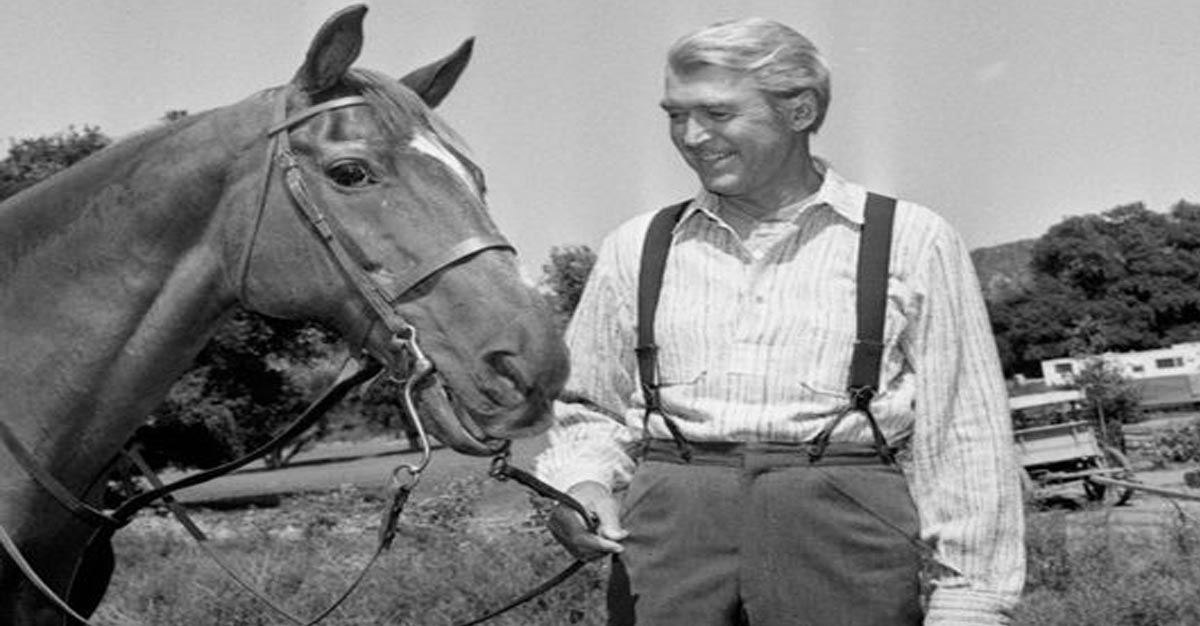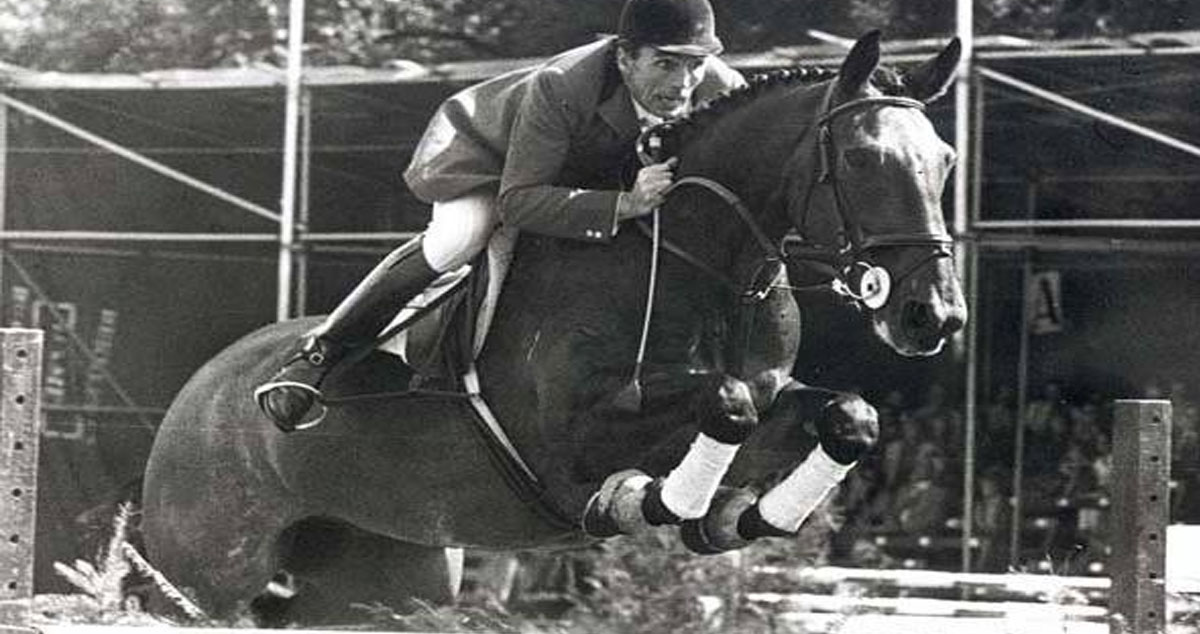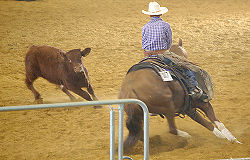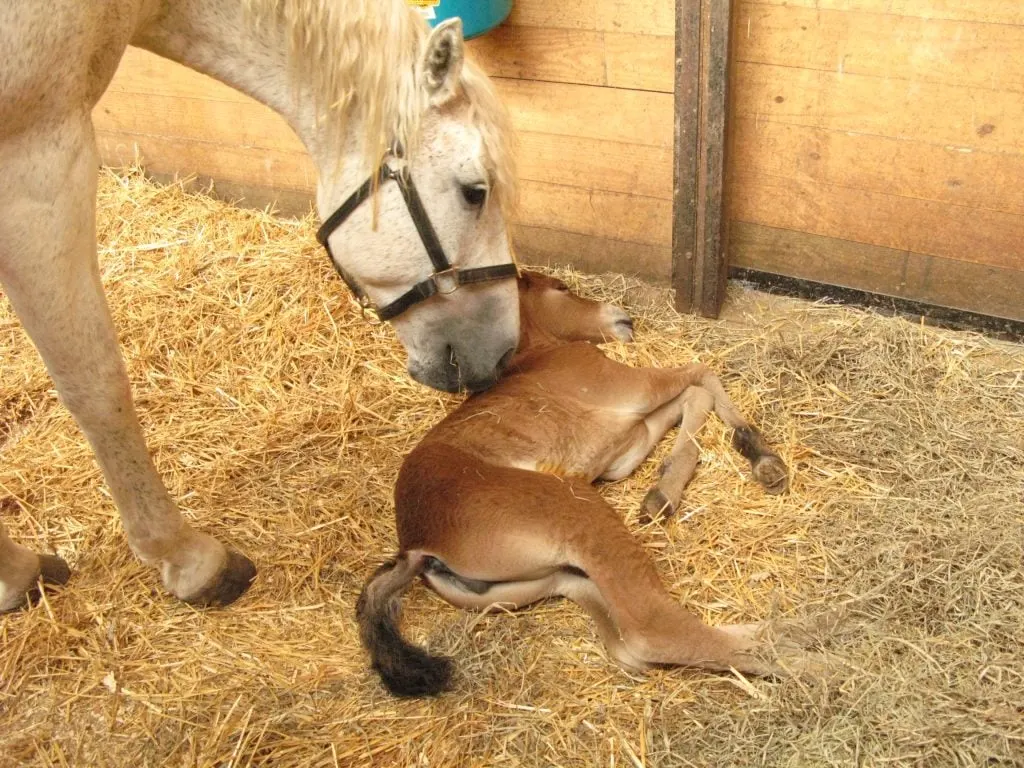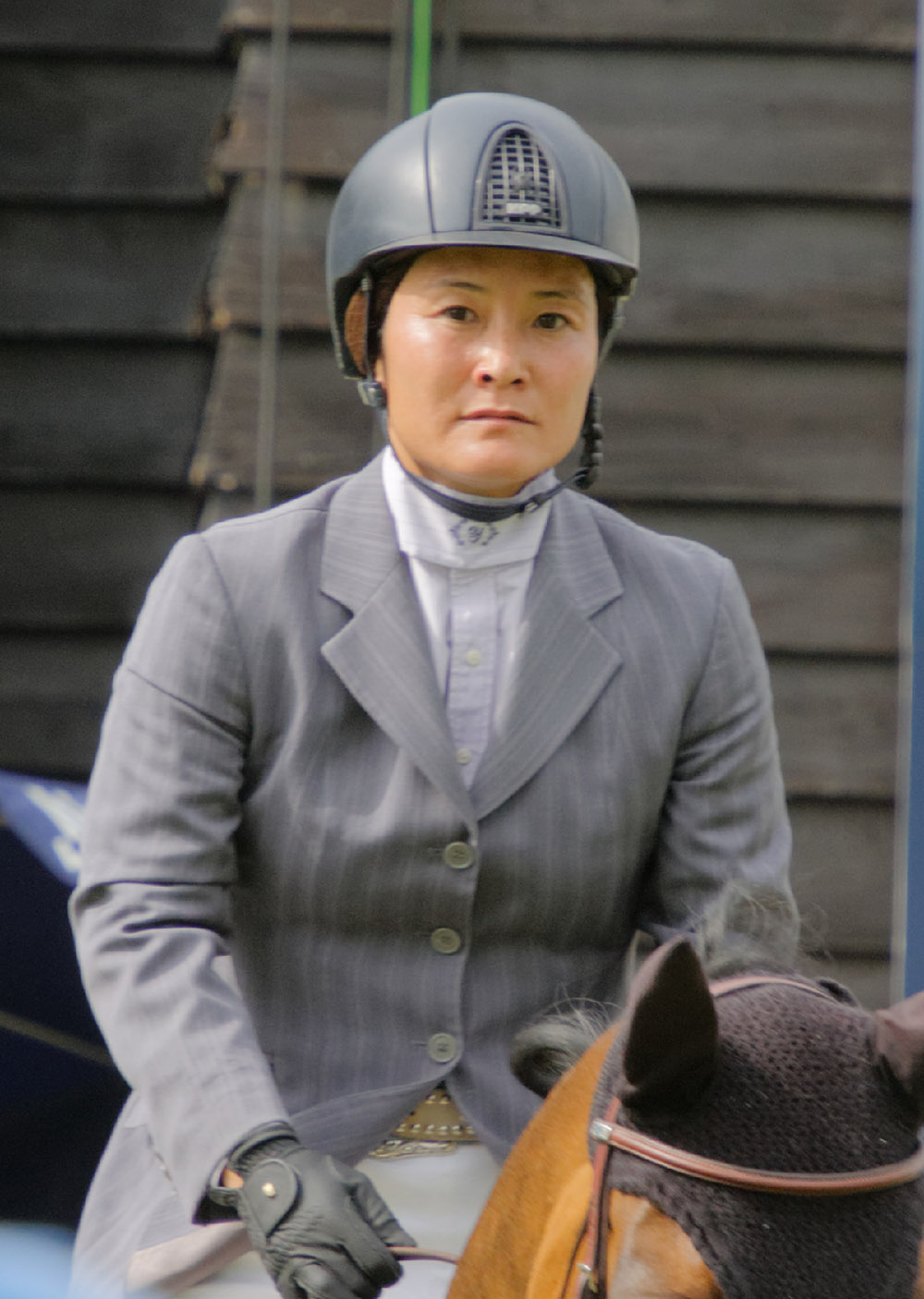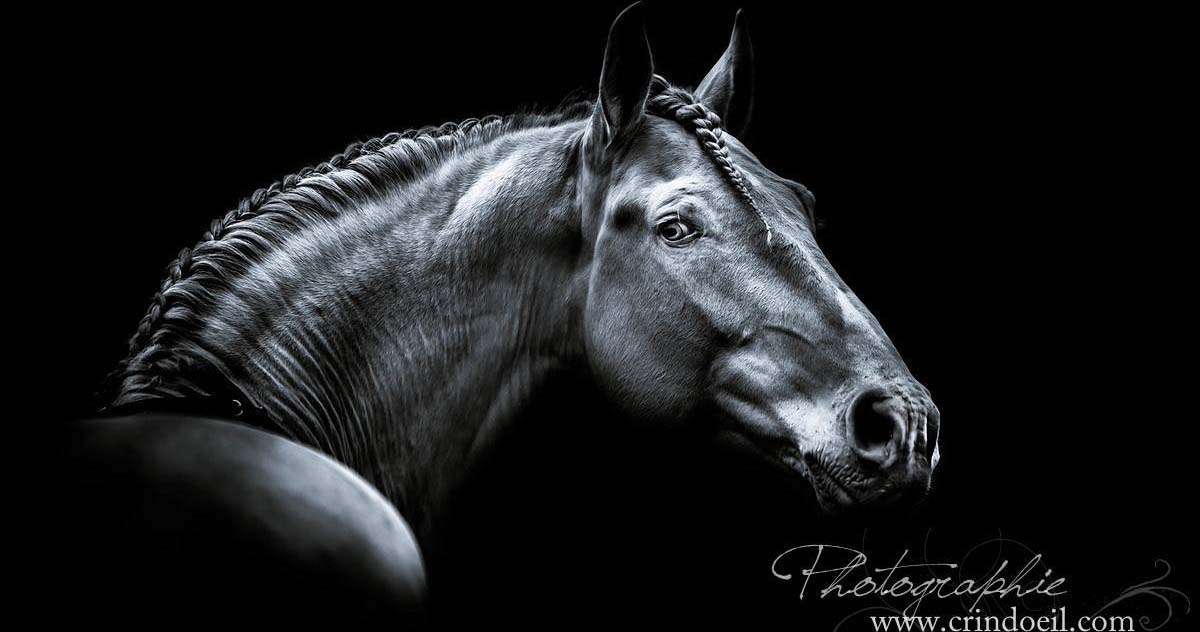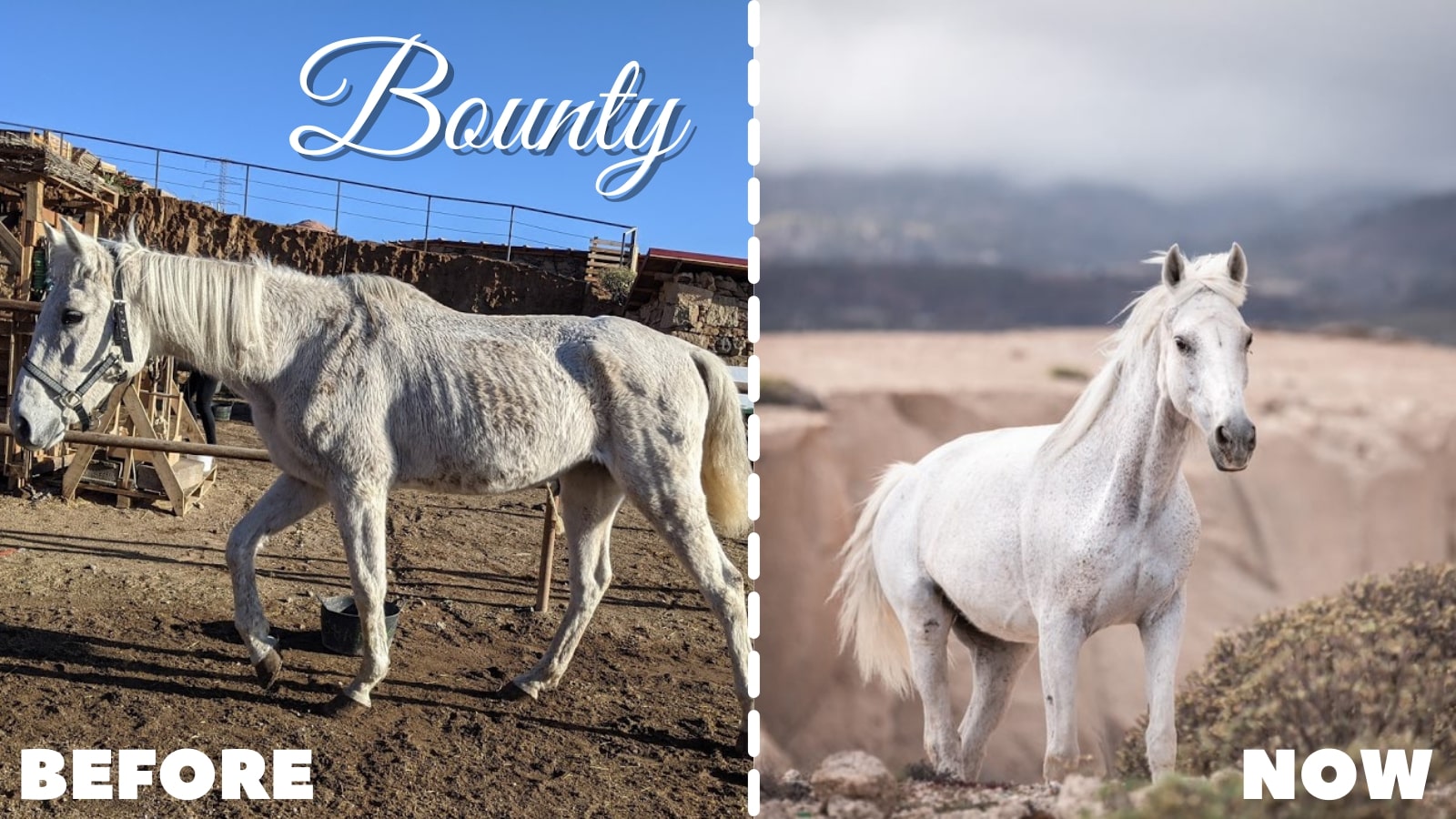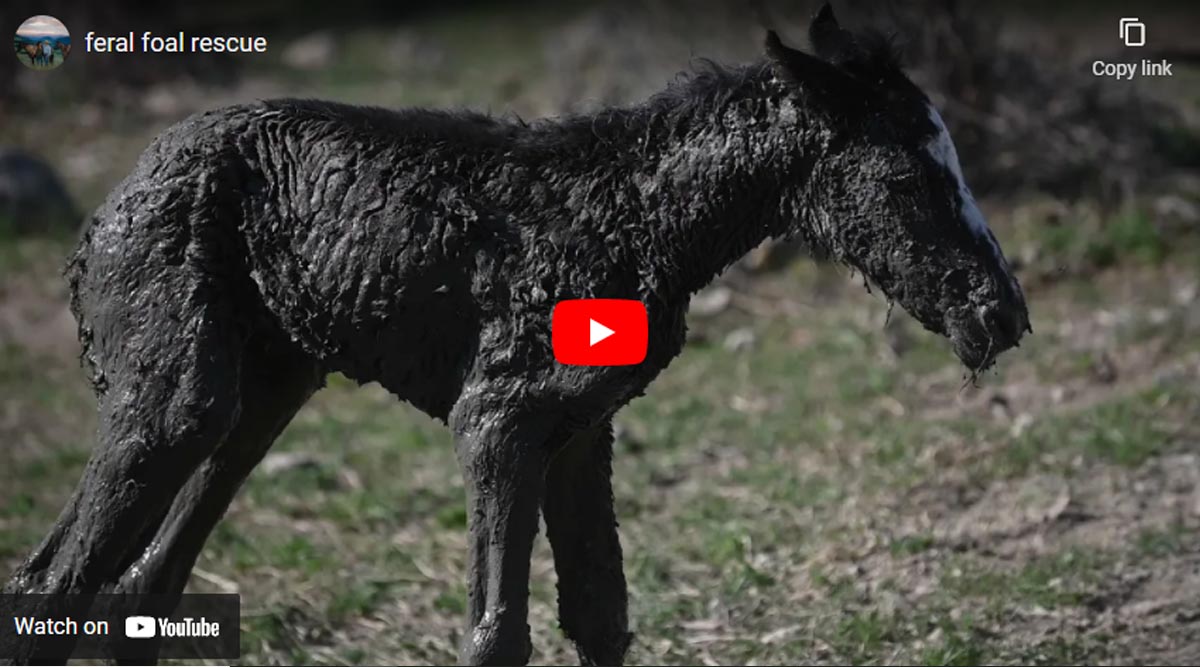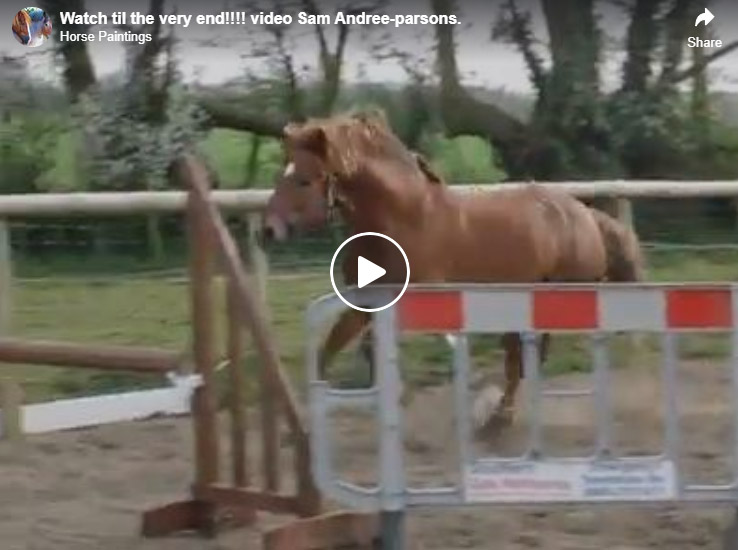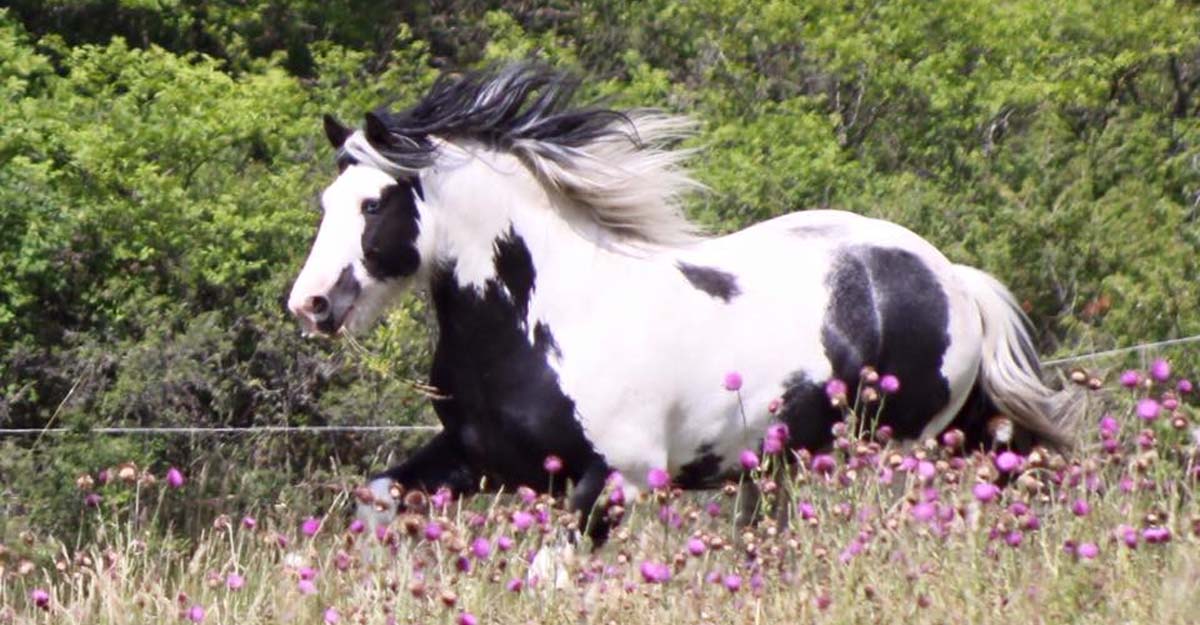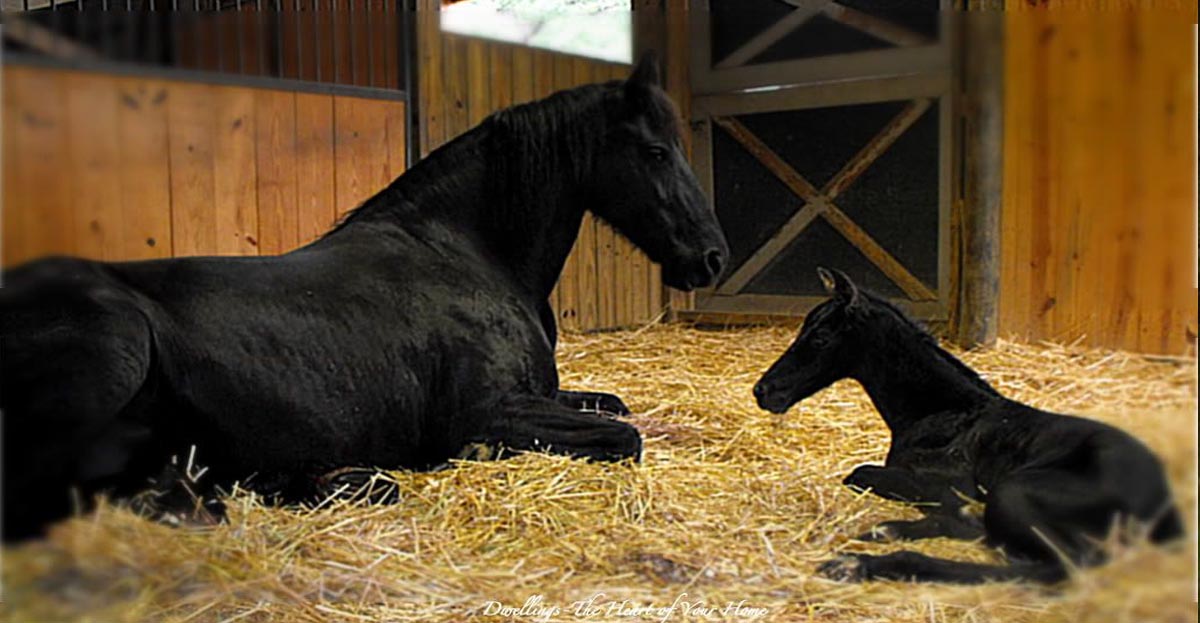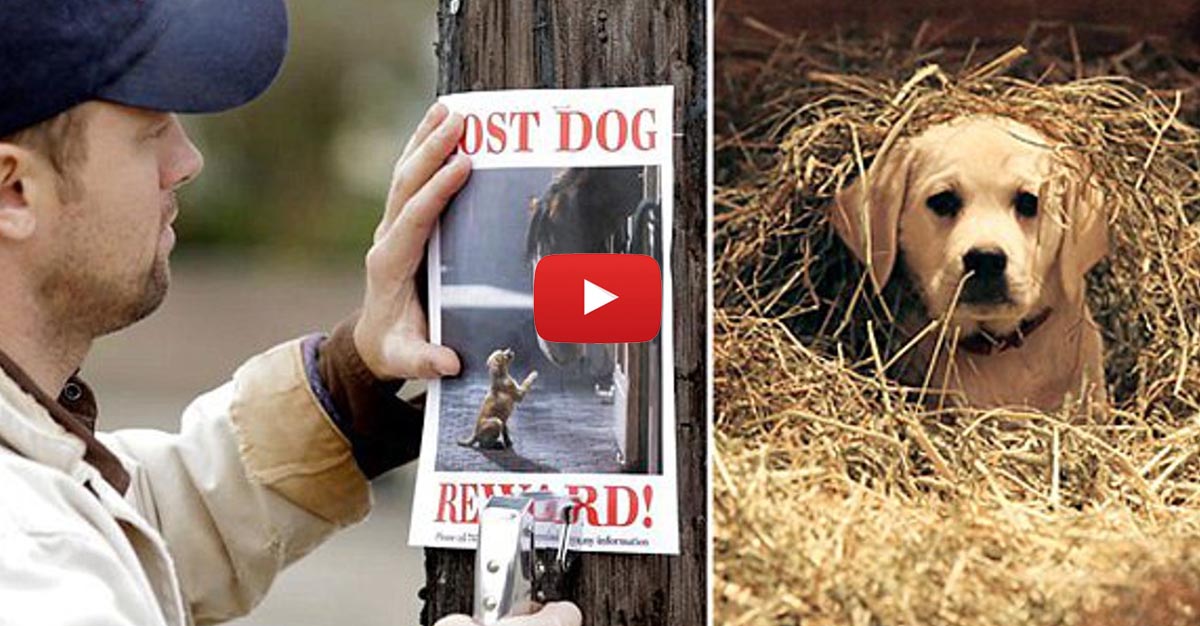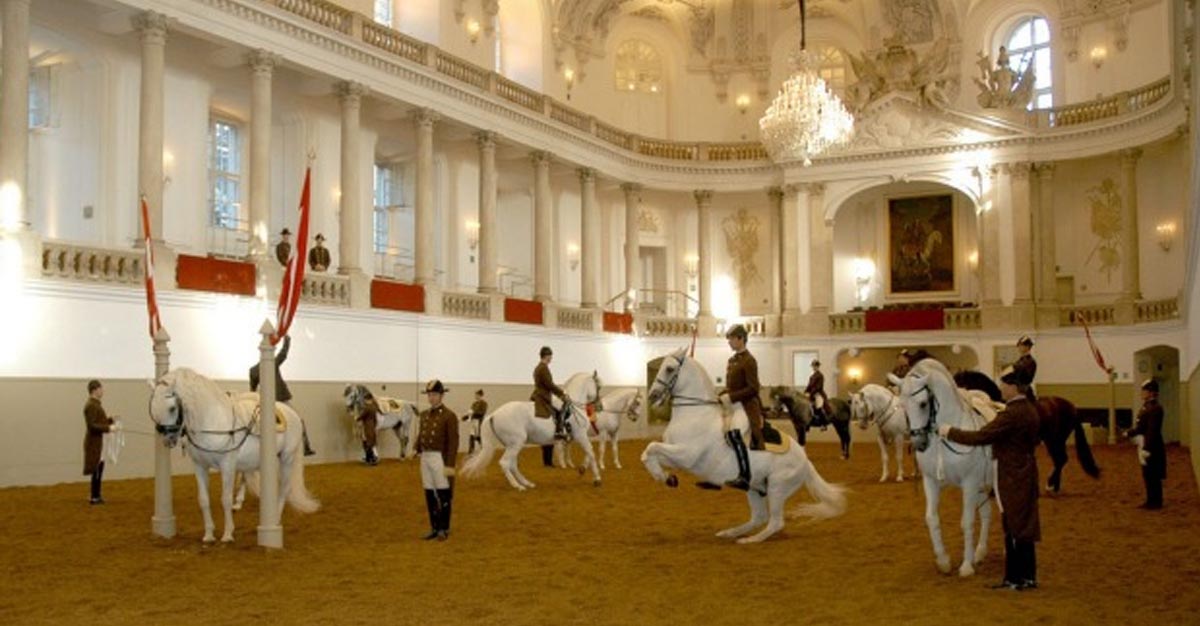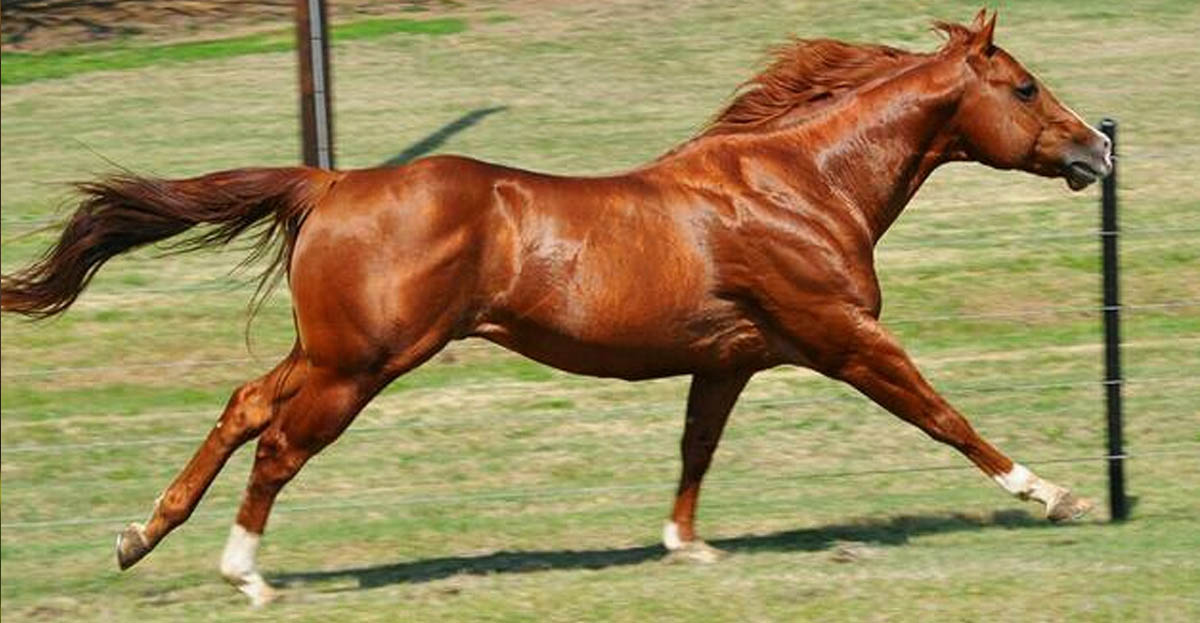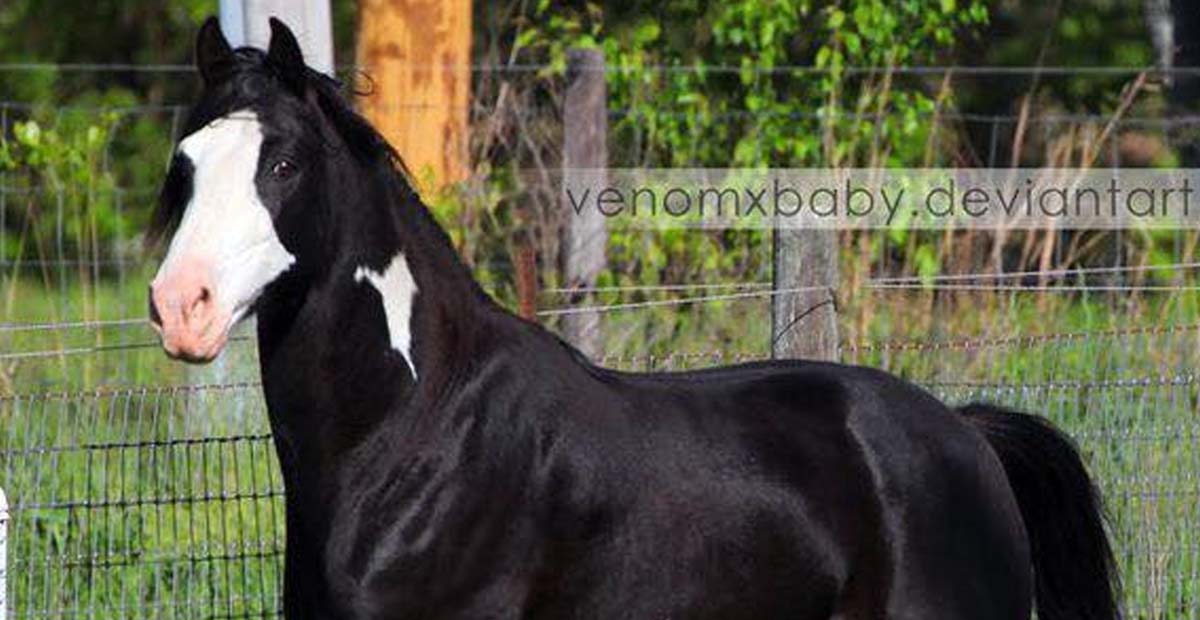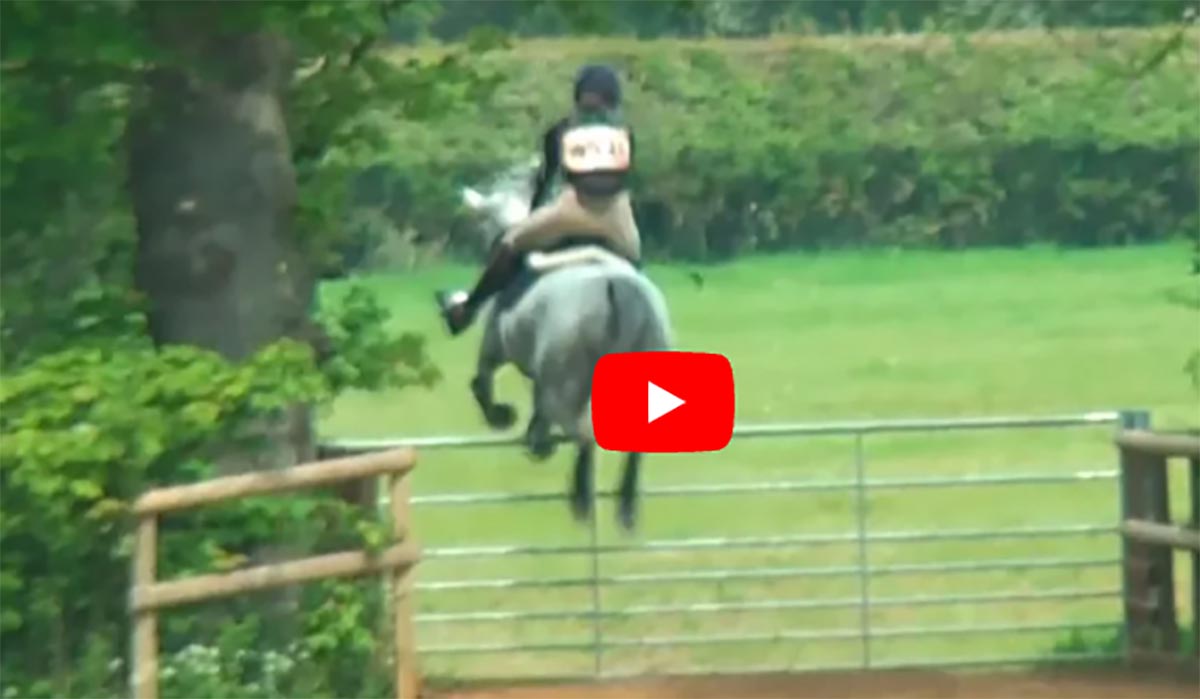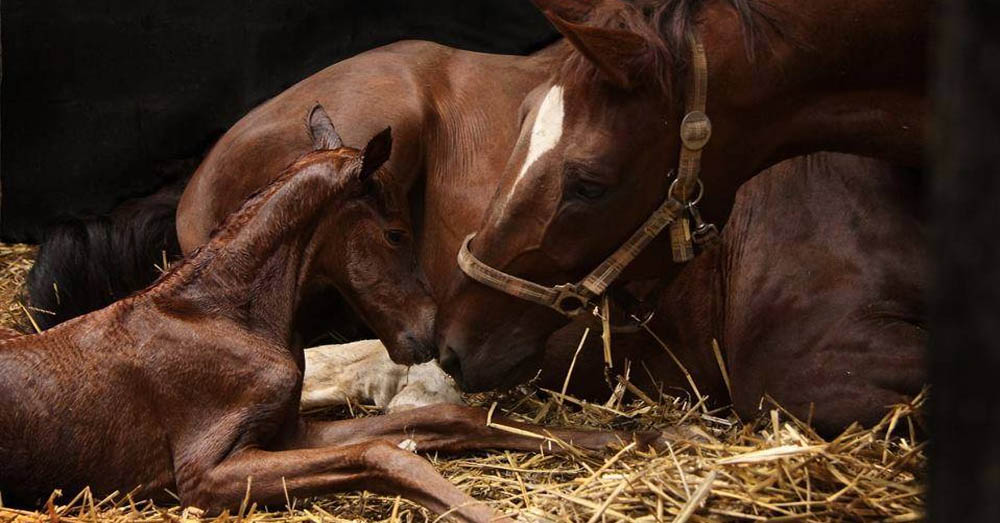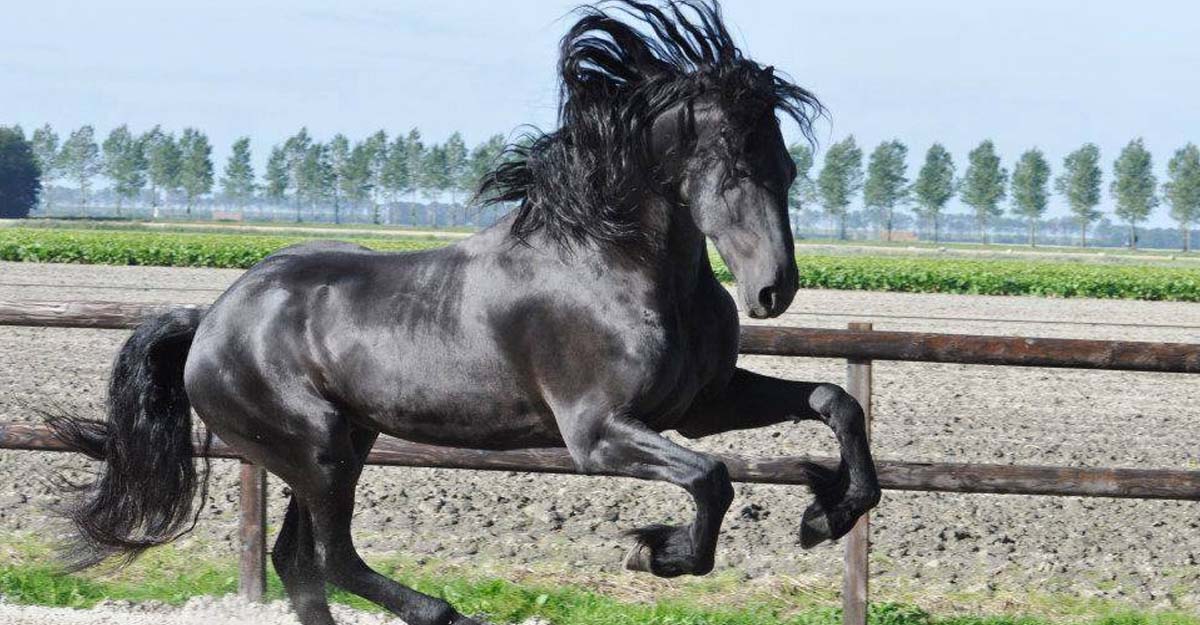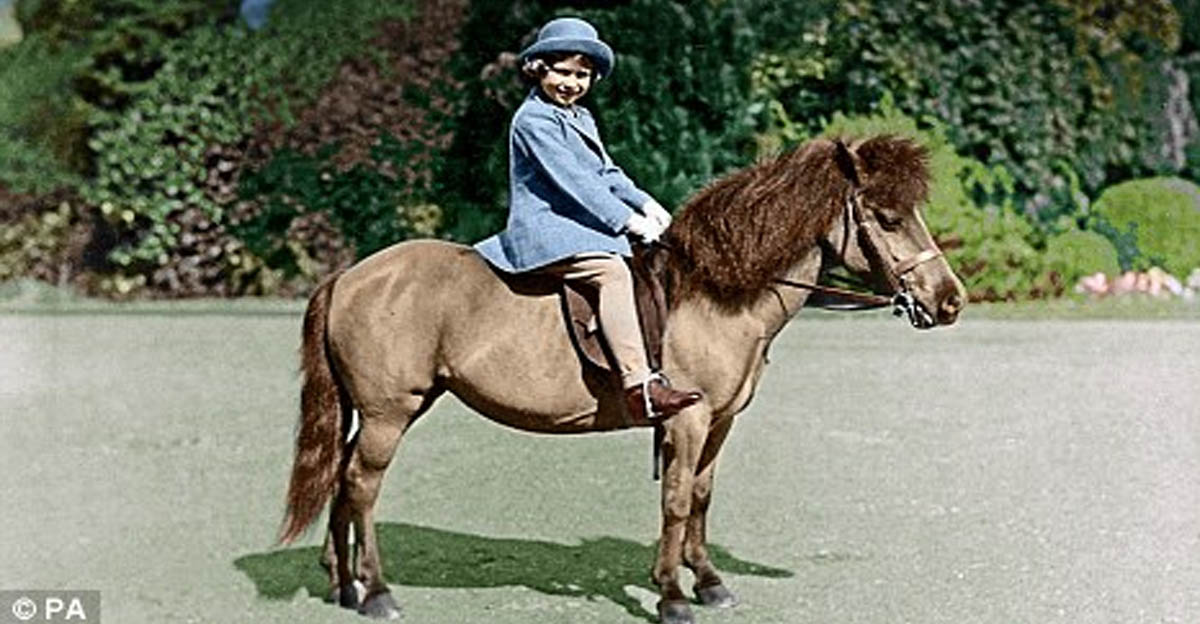Barefoot Horses
Many horse owners decide to go barefoot, read about keeping your horse without shoes, below you can watch a video about Going Barefoot After Shoes. Shod Horses vs Barefoot Horses, Should Horses Be Barefoot?
 ContentAdvert
ContentAdvert
-- a crescent-shaped bone, at the bottom of the column of leg bones,
-- entirely covered by soft tissue (called the corium) with a LOT of blood supply,
-- entirely covered by a tough outside layer (wall and sole) to protect the inside from hard knocks and abrasion.
The back part of the hoof is made up of:
-- the frog, a pad that does the same job as the biggest pad in a cat`s or dog`s paw -- a soft landing;
-- the digital cushion, a tough, fibrous, shock-absorbing "hammock" above the frog, to protect the pastern bones in action;
-- and a W-shaped structure (heels plus bars) that expands sideways when weighted, for shock absorption.
The REASON for keeping a horse barefoot is:
-- to allow the hooves to flex at every step,
-- to get the most possible blood circulation inside the hoof;
-- to have the most possible shock absorption for the leg joints.
The REASON we trim hooves is NOT to make them look nice! -- though a healthy, well-trimmed hoof is certainly beautiful. We trim hooves (when the horse does not live and work on the dry, abrasive ground its feet are made for) so that they do not get overgrown, and to help them keep a correct shape and size.
-- so that the coffin / pedal / P3 bone is almost level ("ground-parallel"), with its heel raised 2 or 3 degrees of angle higher than its toe, when standing on a level surface -- to keep the toe, which grows forward, backed-up to the correct breakover position, so that the leg has time to fully extend forward and the foot can then land heel-first onto its shock-absorbing heel structures.
-- to prevent flaring (stretched white line) at the bottom of the wall, which is painful and leads to mechanical founder.
Things to consider in deciding to go barefoot. It has become clear from widespread experience since 2000 that success in going barefoot is not just about pulling the shoes and using the "wild horse" or "high-performance" barefoot trim. Equally important for barefoot success are:
-- The horse`s nutrition, as well as stomach ulcer prevention, including 24 hours available hay or forage, with attention to the amount of sugars in the feed and hay, because many horses become insulin resistant over time (see www.safergrass.org.) High sugar hay, and stomach ulcers, cause damage to the white line (connection between hoof wall and coffin/pedal bone).
-- 24 hour turnout, or as much as you can arrange in your boarding situation (see websites on "paddock paradise"). Population density near the cities means that stable properties are getting smaller, so horse owners need to make extra effort to get turnout for their horses. Hooves need continual movement for health and healing.
-- Correct and timely care of teeth, using the techniques of modern horse dentistry that balance the jaw and the TMJ (temporo-mandibular joint, where the jaw hinges to the skull). Imbalance in the jaw and TMJ can result in poor back muscling, irregular leg movement, and imbalanced wear of the hooves.
-- Correct saddle fit. Pain from a poorly fitting saddle can cause incorrect movement, leading to imbalanced wear of the hooves.
We have had excellent results using barefoot to rehabilitate foundered horses to full soundness and rideability. The wild-horse barefoot trim re-balances the navicular foot for healing of inflamed tissues. (see More Topics, Breakover, and Do Trim pages).
Due to damage inside the shod hoof, it can take as long as a year after you remove the shoes -- called the "transition year" -- to rebuild internal tissues and grow out a high quality, tough hoof wall that is well attached to the coffin / pedal bone (P3). While this may seem like a long time, if you leave the shoes on, the hoof will not have a chance to heal at all, resulting in the loss of many useful years of life for the horse.
Hoof boots are a standard and recommended tool for the transition from shod to barefoot. For the first several months after pulling the shoes, horses should use front hoof boots for riding. Some will need boots during the entire "transition" year, especially those that work on paved or gravel roads, rocky trails, or frozen ground, to protect sensitive internal tissues while they heal.
Horses that live on soft footing, or are insulin resistant (IR), may always need hoof boots for riding on rough or hard surfaces. Horses that work on paved roads should use boots on all four feet, to prevent excess wear of their hooves; pavement is very abrasive.
Hoof boots are getting better every year. When I started this website in 2000, the only boot available was the original Easy Boot, which was less than an ideal design. In 2014, there are perhaps a dozen very good boots and glue-ons that I know of (including greatly improved Easy Boots), and likely another dozen that I have not heard about. I recommend searching the Internet.
Horses that work on soft arena footing can be sore from lack of concussion. They should be walked 10 minutes on a firm surface before and after the arena work to relieve congestion in the hooves. The hoof is "designed" to go on firm ground so that it flexes at every step, causing ample blood supply inside the foot.
Many of us live in "horse-unfriendly" climates. If the annual rainfall where you live is more than about 30 inches (75 cm), the ground is too soft for hooves to get sufficient concussion and wear. This means we have to take extra care to help their feet stay healthy, more than for horses that live in "horse-friendly" climates where the rainfall is less and the ground is hard and dry. A shorter time between trims, the quality of the trim, and the use of hoof boots for riding on rocky trails become extremely important in rainy climates or during rainy times of the year.
In many areas, if you want a good barefoot trim, you will need to learn to do it yourself. It is not hard to learn to trim. This website has instructions (see Do Trim page), and I also recommend www.ironfreehoof.com. There are barefoot trimmers and hoof schools listed on the websites in my Contact box, above, who can help you learn.
How the typical "pasture trim" makes horses sore
While some thoughtful farriers are helping their clients go barefoot, others have not yet learned how to do the wild-horse trim, which differs in important ways from the conventional "pasture trim," where
-- The toe callus is trimmed away; then the thin sole cannot protect the coffin (pedal, P3) bone.
-- The bottom of the wall is left flat on the ground, as in preparing for a shoe. A flat wall encourages flaring in the barefoot hoof. Flares are painful, like pulling your fingernail away from your finger.
-- The "pasture trim" often ignores a forward-flared toe, leaving a stretched white line and poor connection to the coffin bone, thus the horse is "sore on gravel" and on rocky trails.
--The forward-flared toe causes late breakover and toe-first landing, leading to "navicular" pain and atrophy of the cushioning structures in the back of the foot.
-- The heels are left long; overloads the "white line" (laminar tissue that connects wall to bone) in the toe area, leading to the hoof capsule migrating upwards on the bony column of the pastern.
-- Frog infection is often ignored; encourages toe-first landing due to frog pain.
Barefoot horses gain
-- quality of movement, because a light, naturally shaped hoof with early breakover, allows the front leg to extend fully and the foot to land heel-first;
-- surefootedness, because barefoot hooves can feel the ground and have better traction;
-- stamina, because the flexing hooves help provide blood circulation to the entire body system.
What correct lifestyle does for horses
Tom Teskey DVM believes we can dramatically improve the performance of "our athletic friends" far beyond what most of us have ever seen. Barefoot care is one small part of a horse-friendly program of care. Tom thinks we will be amazed to discover what horses are capable of, when we learn how to provide them an entirely horse-friendly lifestyle.
You can:
1) Learn about their nutritional needs, and the shortcomings of current agricultural practice in raising equine foods. I suggest starting with www.safergrass.org and Pat Coleby`s book Natural Horse Care (see below). Feed Your Horse Like a Horse by Juliet Getty is good on overall horse nutrition.
2) Find ways for horses in confined areas to get enough relaxed walking throughout 24 hours. Jaime Jackson`s Paddock Paradise: A Guide to Natural Horse Boarding points in a good direction. You can Google several websites with examples of Paddock Paradise set-ups, and there are some YouTube videos.
3) The newer methods of dental care, which affects the balance of the entire horse, and understanding of back motion and saddle fit, which allows movement to be freer, can help tremendously. (See references below, dental school and Joyce Harman DVM.)
4) Training approaches can dramatically improve the communication and understanding between horses and humans -- and thereby the horse`s performance. There are many people teaching one or another variety of "natural horsemanship," an approach that respects the horse`s nature, takes his point of view into account, and teaches ideas in small enough bits that the horse can understand and work with you in partnership.
Clicker training adds the principles of operant conditioning to the "horse-respectful" approach, to offer much more precise communication between human and horse. Alexandra Kurland`s books and DVD`s about clicker training for horses are available at www.theclickercenter.com. I have been using clicker training with my horses for many years, and find the level of understanding and closeness much better than I ever thought we could have.
5) Increasingly, people are using animal communication to solve interspecies "problems." An online book about using this approach with horses is Bobby`s Diaries by Jenny Pearce of Australia, available at www.bookswithspirit.com. Bobby was able to explain to his owner how she could do her part of the riding better, so that he could respond better to her signals.
Jenny`s new book (2008) Zen Connection with Horses goes into detail about how to improve horse-human interactions, building on the horse`s reaction of "licking and chewing" (the Chew) to release misunderstandings and old traumas so that he can deal relaxedly with the present situation.
There are excellent animal communicators who can help you improve your horse-human relationship as well as with injuries and illnesses. I have consulted with Karen Nowak in Montana, USA, www.freedomreinsllc.com for health and injury situations, as well as for talking with my new horse before I bought her.
Importance of Heel First Landing This section will answer most of the questions people email me about.
Heel-first landing in the front feet is necessary for soundness, and indicates a correct trim with no imbalances. (Hind feet nearly always land heel-first, due to the zig-zag arrangement of the hind leg joints, and this is one reason why hind feet are more often sound.) (Breakover page has photos showing what toe-first and heel-first landing look like.)
Why? The horse`s foot is built to land on the well-padded frog, similar to the biggest pad on a dog`s or cat`s foot. Heel-first landing gives correct circulation inside the foot, absorbs concussion to protect the leg joints from shock, and helps remodel deformed hooves.
When a horse lands toe-first, or flat-footed, over a long period of time, the laminar tissue ("white line") which holds the hoof wall securely to the coffin (pedal) bone is damaged by the excessive force on the toe wall; forward toe flare (mechanical founder) develops; and "navicular" or other heel pain can result from incorrect movement of the pastern bones.
If a front foot is landing toe first on level ground, look for one or more of the following -- these are the most common hoof difficulties:
1) Forward flared toe (see Flares page) causes late breakover, which in turn gives the front leg too little time to fully extend forward for a heel-first landing. (see Breakover page) Even a slight flare delays breakover. Forward flared toe comes from:
a) the mechanical forces of horseshoes, which tend to deform the hoof capsule in a forward direction, over time
b) trimming the wall to a flat bottom, as in preparation for a horseshoe, rather than using the rounded bevel called a "mustang roll" (see Flares, Strategy, and Do Trim pages)
c) "grass laminitis" / insulin resistance / Cushings syndrome, all of which make the "white line" (laminar tissue) stretchy so that the toe wall is easily pulled away from the coffin (pedal) bone (see Founder page and www.safergrass.org and groups.yahoo.com/group/ EquineCushings)
If you have been consistently applying a good mustang roll for many months, and the toe wall will not grow down straight, this points to insulin resistance, which becomes more common as horses age, or Cushings, an age-related change in pituitary gland function.
If your horse`s toe-first landing is due to a forward flared toe, you need to "back up" the toe to the edge of the sole. (see Flares and Strategy pages)
2) Fungus infection in the back half of the frog (peeling layers, inability of frog to grow strongly) often with a deep crease between the heel bulbs. Fungus is very painful, and the horse will land toe-first deliberately to avoid this heel pain. (For treatment, see Fungus section on More Topics page)
3) Soft, undeveloped digital cushion (a shock absorbing tissue just above the frog, which is supposed to be tough and fibrous), due to:
a) horseshoes, which prevent frog contact with the ground
b) horse did not go many miles per day as a foal, or currently does not go many miles per day, on firm ground, which toughens the digital cushion.
In most domestic horses, especially those that have been shod for a long time, the horse will deliberatelly land toe-first to avoid concussion on the undeveloped digital cushion. The heel should be left 1/8 inch to, in some cases, up to 1/2 inch (2 to 12 mm) longer than the sole in the seat of corn (after any chalky sole material is scraped away), to give some protection to the digital cushion while still allowing frog contact with the ground. Generally the horse will let you know, by increased or decreased lameness, whether you have trimmed the heel to just the length he needs.
Horses raised barefoot with sufficient movement, or those in ongoing endurance training, or that live in large enclosures in dry climates, often have tough digital cushions, and their heels can be trimmed (or will naturally wear) down to the level of the sole.
If your horse`s front feet land toe-first, you need to find the cause and change the situation that is preventing heel-first landing. The hoof must land heel-first consistently to become sound.
For all of these conditions, hoof boots should be used for riding (except in soft arena footing) until the hooves are sound and the horse is able to land heel-first consistently.
My story - Marjorie Smith
It took me five years to think my way through to going barefoot, before there was any "barefoot movement" to point the way. I completely respect how long it takes to think this through for oneself. I am not in a hurry for anyone to make a decision, I would rather you "do your homework" and take your time.
-- I watched farrier Tony Gonzalez teach about balancing hooves, and saw an extremely fidgety horse suddenly become calm after Tony shaved a small amount off the outside toe of one of its feet. The horse stood quietly the rest of the day.
-- Becky Tober, a Gonzalez student, showed me how to see many kinds of imbalances in hooves.
-- A "pasture trim" on my first horse made me notice that you have to do something different, to ride a barefoot horse. She was very sore, and I put shoes back on her.
-- I moved to the east coast in 1998, had the shoes pulled, and started playing with trimming tools. I trimmed my two horses every 3 to 4 weeks for a year and worked my way through all the typical imbalances -- lots of observation, thought, and experimenting.
-- While figuring out how to trim, I found Jaime Jackson`s first book, The Natural Horse. Later I visited Jaime and saw his awesome set of wild mustang feet; looked at them for hours; took their shape deep into my core. There are photos of those hooves on www.tribeequus.com, and of similar wild hooves on the "Hoof Shape" page of this website.
There are photos of another wild horse`s feet on www.hoofrehab.com. Click Articles, click Wild Horses, click at bottom "more wild horse pictures," scroll down to "Tragedy in the high desert."
-- I heard of Dr. Hiltrud Strasser, a German veterinarian who developed a method for rehabilitating lame horses that includes a barefoot, short-heel trim along with 24-hour turnout and 24-hours available grass hay. I went to a seminar, was inspired by her knowledge of physiology and mechanics of the hoof and leg, and in 2001 took her 9-month Hoofcare Specialist course.
-- I found Dr. Strasser`s "clinic" trim invasive of the hoof and inappropriate for horses with nearly-normal feet. My horses were unrideable for a year and a half, as were the horses of friends who took the course with me, so I went back to the wild horse trim. I terminated my certification with Dr. Strasser and do not recommend her "clinic" trim, though she has good ideas about "natural boarding" and the general care of lame horses.
Since then, there has been a steady flow of information and research, which I have tried to keep up with.
What we learn from wild horses
Jaime Jackson, a farrier, went out to study the hooves and living habits of the wild mustangs of North America (escaped domestic horses and their feral descendents). Their hooves were far different from anything he had seen in domestic horses; he decided that what he had been doing as a farrier was unnatural and harmful. He changed over to a barefoot trim practice, and found that when he trimmed lame feet to the mustang hoof shape, they would recover, even from severe lamenesses.
In The Natural Horse, Jackson describes the lifestyle and hoof shape of horses living wild in their natural environment. The tough, sound, beautiful feet of horses living in wild herds in the western United States are worn to an efficient, short-heeled trim by the many miles they travel every day.
The horse is a creature of wide-open, dry plains and mountain slopes (except for the wide-footed breeds of northern Europe, which are adapted to living in soft, wet footing). The horse`s native environment includes extremes of heat and cold. The ground is dry, hard, and often rocky. Rivers or water holes are scarce. The wild horse`s food is the dry, sparse bunch-grasses of low-rainfall areas, and a variety of herbs, shrubs, roots, and bark.
Wild horses walk a daily loop of about 20 miles (30 km.) to find food, water, and other daily needs such as minerals, herbs, shelter from storms, and safe places to sleep. All this walking wears and shapes their feet to perfection.
The horse is exactly designed to live well in that environment. Every part of his body, and the social life of the herd, are fashioned for a strenuous life -- and he requires extreme conditions to stay in peak health. Horses have lived this way for millions of years, far longer than human beings have existed. The horse is a successful species -- the design works!
The horse`s hoof is a masterpiece of living design, built to handle awesome mechanical requirements. We can sustain it by providing what it needs. We can set up "natural boarding" for our horses, to promote their health in captivity, so that they can have an environment similar to what they were designed for.
Jaime Jackson`s Paddock Paradise explains the key to keeping horses moving -- a long, narrow, continuous loop or "track" which takes them to each of their daily needs in turn. Groups of horses that live on such a walking loop wear their feet enough that they need only minimal trimming. They get much more exercise than horses that stand around in a typical rectangular turnout.
When you "go barefoot" with a previously shod horse, your success will depend about equally on arranging for changes in the horse`s lifestyle -- especially nutrition and movement -- and on trimming the hooves to the wild-horse shape.
Learning the barefoot trim and going professional It`s possible to learn to trim using this website and, if you want, some email conversation. I recommend you get at least one book or video and attend one or more clinics if available; the different points of view will help you fill in the whole picture. You will be "on a fast learning curve" for about a year before you understand the hoof with confidence. Your horse is better off even with your occasional "learning mistakes" than if he were shod.
Professional barefoot trimmers are making a good living. Pete Ramey talks about trimming as a business in his book, and see "Going Pro" page.
Barefoot trimming is a reasonable occupation for women. You are not using the heavy blacksmithing equipment, and you can handle the horses without force if you learn "natural horsemanship" skills. Horses generally become cooperative when you explain clearly (in their terms) what you want of them, and within minutes when they realize you are making their feet feel better. (See Photo Gallery 2, #19)
I encourage you to gradually start trimming for others when you have gained about a year`s experience with your own horse and feel confident about handling, trimming, and figuring out sorenesses. Please email me if you`re thinking about this; I enjoy encouraging people, and can point you towards further training.


Reasons for going barefoot, and for trimming hooves
The hoof is not like a solid block of wood. It is an exquisitely designed, flexible, shock-absorbing, living organ. It is made up of:-- a crescent-shaped bone, at the bottom of the column of leg bones,
-- entirely covered by soft tissue (called the corium) with a LOT of blood supply,
-- entirely covered by a tough outside layer (wall and sole) to protect the inside from hard knocks and abrasion.
The back part of the hoof is made up of:
-- the frog, a pad that does the same job as the biggest pad in a cat`s or dog`s paw -- a soft landing;
-- the digital cushion, a tough, fibrous, shock-absorbing "hammock" above the frog, to protect the pastern bones in action;
-- and a W-shaped structure (heels plus bars) that expands sideways when weighted, for shock absorption.
The REASON for keeping a horse barefoot is:
-- to allow the hooves to flex at every step,
-- to get the most possible blood circulation inside the hoof;
-- to have the most possible shock absorption for the leg joints.
The REASON we trim hooves is NOT to make them look nice! -- though a healthy, well-trimmed hoof is certainly beautiful. We trim hooves (when the horse does not live and work on the dry, abrasive ground its feet are made for) so that they do not get overgrown, and to help them keep a correct shape and size.
-- so that the coffin / pedal / P3 bone is almost level ("ground-parallel"), with its heel raised 2 or 3 degrees of angle higher than its toe, when standing on a level surface -- to keep the toe, which grows forward, backed-up to the correct breakover position, so that the leg has time to fully extend forward and the foot can then land heel-first onto its shock-absorbing heel structures.
-- to prevent flaring (stretched white line) at the bottom of the wall, which is painful and leads to mechanical founder.
Things to consider in deciding to go barefoot. It has become clear from widespread experience since 2000 that success in going barefoot is not just about pulling the shoes and using the "wild horse" or "high-performance" barefoot trim. Equally important for barefoot success are:
-- The horse`s nutrition, as well as stomach ulcer prevention, including 24 hours available hay or forage, with attention to the amount of sugars in the feed and hay, because many horses become insulin resistant over time (see www.safergrass.org.) High sugar hay, and stomach ulcers, cause damage to the white line (connection between hoof wall and coffin/pedal bone).
-- 24 hour turnout, or as much as you can arrange in your boarding situation (see websites on "paddock paradise"). Population density near the cities means that stable properties are getting smaller, so horse owners need to make extra effort to get turnout for their horses. Hooves need continual movement for health and healing.
-- Correct and timely care of teeth, using the techniques of modern horse dentistry that balance the jaw and the TMJ (temporo-mandibular joint, where the jaw hinges to the skull). Imbalance in the jaw and TMJ can result in poor back muscling, irregular leg movement, and imbalanced wear of the hooves.
-- Correct saddle fit. Pain from a poorly fitting saddle can cause incorrect movement, leading to imbalanced wear of the hooves.
We have had excellent results using barefoot to rehabilitate foundered horses to full soundness and rideability. The wild-horse barefoot trim re-balances the navicular foot for healing of inflamed tissues. (see More Topics, Breakover, and Do Trim pages).
Due to damage inside the shod hoof, it can take as long as a year after you remove the shoes -- called the "transition year" -- to rebuild internal tissues and grow out a high quality, tough hoof wall that is well attached to the coffin / pedal bone (P3). While this may seem like a long time, if you leave the shoes on, the hoof will not have a chance to heal at all, resulting in the loss of many useful years of life for the horse.
Hoof boots are a standard and recommended tool for the transition from shod to barefoot. For the first several months after pulling the shoes, horses should use front hoof boots for riding. Some will need boots during the entire "transition" year, especially those that work on paved or gravel roads, rocky trails, or frozen ground, to protect sensitive internal tissues while they heal.
Horses that live on soft footing, or are insulin resistant (IR), may always need hoof boots for riding on rough or hard surfaces. Horses that work on paved roads should use boots on all four feet, to prevent excess wear of their hooves; pavement is very abrasive.
Hoof boots are getting better every year. When I started this website in 2000, the only boot available was the original Easy Boot, which was less than an ideal design. In 2014, there are perhaps a dozen very good boots and glue-ons that I know of (including greatly improved Easy Boots), and likely another dozen that I have not heard about. I recommend searching the Internet.
Horses that work on soft arena footing can be sore from lack of concussion. They should be walked 10 minutes on a firm surface before and after the arena work to relieve congestion in the hooves. The hoof is "designed" to go on firm ground so that it flexes at every step, causing ample blood supply inside the foot.
Many of us live in "horse-unfriendly" climates. If the annual rainfall where you live is more than about 30 inches (75 cm), the ground is too soft for hooves to get sufficient concussion and wear. This means we have to take extra care to help their feet stay healthy, more than for horses that live in "horse-friendly" climates where the rainfall is less and the ground is hard and dry. A shorter time between trims, the quality of the trim, and the use of hoof boots for riding on rocky trails become extremely important in rainy climates or during rainy times of the year.
In many areas, if you want a good barefoot trim, you will need to learn to do it yourself. It is not hard to learn to trim. This website has instructions (see Do Trim page), and I also recommend www.ironfreehoof.com. There are barefoot trimmers and hoof schools listed on the websites in my Contact box, above, who can help you learn.
How the typical "pasture trim" makes horses sore
While some thoughtful farriers are helping their clients go barefoot, others have not yet learned how to do the wild-horse trim, which differs in important ways from the conventional "pasture trim," where
-- The toe callus is trimmed away; then the thin sole cannot protect the coffin (pedal, P3) bone.
-- The bottom of the wall is left flat on the ground, as in preparing for a shoe. A flat wall encourages flaring in the barefoot hoof. Flares are painful, like pulling your fingernail away from your finger.
-- The "pasture trim" often ignores a forward-flared toe, leaving a stretched white line and poor connection to the coffin bone, thus the horse is "sore on gravel" and on rocky trails.
--The forward-flared toe causes late breakover and toe-first landing, leading to "navicular" pain and atrophy of the cushioning structures in the back of the foot.
-- The heels are left long; overloads the "white line" (laminar tissue that connects wall to bone) in the toe area, leading to the hoof capsule migrating upwards on the bony column of the pastern.
-- Frog infection is often ignored; encourages toe-first landing due to frog pain.
Barefoot horses gain
-- quality of movement, because a light, naturally shaped hoof with early breakover, allows the front leg to extend fully and the foot to land heel-first;
-- surefootedness, because barefoot hooves can feel the ground and have better traction;
-- stamina, because the flexing hooves help provide blood circulation to the entire body system.
What correct lifestyle does for horses
Tom Teskey DVM believes we can dramatically improve the performance of "our athletic friends" far beyond what most of us have ever seen. Barefoot care is one small part of a horse-friendly program of care. Tom thinks we will be amazed to discover what horses are capable of, when we learn how to provide them an entirely horse-friendly lifestyle.
You can:
1) Learn about their nutritional needs, and the shortcomings of current agricultural practice in raising equine foods. I suggest starting with www.safergrass.org and Pat Coleby`s book Natural Horse Care (see below). Feed Your Horse Like a Horse by Juliet Getty is good on overall horse nutrition.
2) Find ways for horses in confined areas to get enough relaxed walking throughout 24 hours. Jaime Jackson`s Paddock Paradise: A Guide to Natural Horse Boarding points in a good direction. You can Google several websites with examples of Paddock Paradise set-ups, and there are some YouTube videos.
3) The newer methods of dental care, which affects the balance of the entire horse, and understanding of back motion and saddle fit, which allows movement to be freer, can help tremendously. (See references below, dental school and Joyce Harman DVM.)
4) Training approaches can dramatically improve the communication and understanding between horses and humans -- and thereby the horse`s performance. There are many people teaching one or another variety of "natural horsemanship," an approach that respects the horse`s nature, takes his point of view into account, and teaches ideas in small enough bits that the horse can understand and work with you in partnership.
Clicker training adds the principles of operant conditioning to the "horse-respectful" approach, to offer much more precise communication between human and horse. Alexandra Kurland`s books and DVD`s about clicker training for horses are available at www.theclickercenter.com. I have been using clicker training with my horses for many years, and find the level of understanding and closeness much better than I ever thought we could have.
5) Increasingly, people are using animal communication to solve interspecies "problems." An online book about using this approach with horses is Bobby`s Diaries by Jenny Pearce of Australia, available at www.bookswithspirit.com. Bobby was able to explain to his owner how she could do her part of the riding better, so that he could respond better to her signals.
Jenny`s new book (2008) Zen Connection with Horses goes into detail about how to improve horse-human interactions, building on the horse`s reaction of "licking and chewing" (the Chew) to release misunderstandings and old traumas so that he can deal relaxedly with the present situation.
There are excellent animal communicators who can help you improve your horse-human relationship as well as with injuries and illnesses. I have consulted with Karen Nowak in Montana, USA, www.freedomreinsllc.com for health and injury situations, as well as for talking with my new horse before I bought her.
Importance of Heel First Landing This section will answer most of the questions people email me about.
Heel-first landing in the front feet is necessary for soundness, and indicates a correct trim with no imbalances. (Hind feet nearly always land heel-first, due to the zig-zag arrangement of the hind leg joints, and this is one reason why hind feet are more often sound.) (Breakover page has photos showing what toe-first and heel-first landing look like.)
Why? The horse`s foot is built to land on the well-padded frog, similar to the biggest pad on a dog`s or cat`s foot. Heel-first landing gives correct circulation inside the foot, absorbs concussion to protect the leg joints from shock, and helps remodel deformed hooves.
When a horse lands toe-first, or flat-footed, over a long period of time, the laminar tissue ("white line") which holds the hoof wall securely to the coffin (pedal) bone is damaged by the excessive force on the toe wall; forward toe flare (mechanical founder) develops; and "navicular" or other heel pain can result from incorrect movement of the pastern bones.
If a front foot is landing toe first on level ground, look for one or more of the following -- these are the most common hoof difficulties:
1) Forward flared toe (see Flares page) causes late breakover, which in turn gives the front leg too little time to fully extend forward for a heel-first landing. (see Breakover page) Even a slight flare delays breakover. Forward flared toe comes from:
a) the mechanical forces of horseshoes, which tend to deform the hoof capsule in a forward direction, over time
b) trimming the wall to a flat bottom, as in preparation for a horseshoe, rather than using the rounded bevel called a "mustang roll" (see Flares, Strategy, and Do Trim pages)
c) "grass laminitis" / insulin resistance / Cushings syndrome, all of which make the "white line" (laminar tissue) stretchy so that the toe wall is easily pulled away from the coffin (pedal) bone (see Founder page and www.safergrass.org and groups.yahoo.com/group/ EquineCushings)
If you have been consistently applying a good mustang roll for many months, and the toe wall will not grow down straight, this points to insulin resistance, which becomes more common as horses age, or Cushings, an age-related change in pituitary gland function.
If your horse`s toe-first landing is due to a forward flared toe, you need to "back up" the toe to the edge of the sole. (see Flares and Strategy pages)
2) Fungus infection in the back half of the frog (peeling layers, inability of frog to grow strongly) often with a deep crease between the heel bulbs. Fungus is very painful, and the horse will land toe-first deliberately to avoid this heel pain. (For treatment, see Fungus section on More Topics page)
3) Soft, undeveloped digital cushion (a shock absorbing tissue just above the frog, which is supposed to be tough and fibrous), due to:
a) horseshoes, which prevent frog contact with the ground
b) horse did not go many miles per day as a foal, or currently does not go many miles per day, on firm ground, which toughens the digital cushion.
In most domestic horses, especially those that have been shod for a long time, the horse will deliberatelly land toe-first to avoid concussion on the undeveloped digital cushion. The heel should be left 1/8 inch to, in some cases, up to 1/2 inch (2 to 12 mm) longer than the sole in the seat of corn (after any chalky sole material is scraped away), to give some protection to the digital cushion while still allowing frog contact with the ground. Generally the horse will let you know, by increased or decreased lameness, whether you have trimmed the heel to just the length he needs.
Horses raised barefoot with sufficient movement, or those in ongoing endurance training, or that live in large enclosures in dry climates, often have tough digital cushions, and their heels can be trimmed (or will naturally wear) down to the level of the sole.
If your horse`s front feet land toe-first, you need to find the cause and change the situation that is preventing heel-first landing. The hoof must land heel-first consistently to become sound.
For all of these conditions, hoof boots should be used for riding (except in soft arena footing) until the hooves are sound and the horse is able to land heel-first consistently.
My story - Marjorie Smith
It took me five years to think my way through to going barefoot, before there was any "barefoot movement" to point the way. I completely respect how long it takes to think this through for oneself. I am not in a hurry for anyone to make a decision, I would rather you "do your homework" and take your time.
-- I watched farrier Tony Gonzalez teach about balancing hooves, and saw an extremely fidgety horse suddenly become calm after Tony shaved a small amount off the outside toe of one of its feet. The horse stood quietly the rest of the day.
-- Becky Tober, a Gonzalez student, showed me how to see many kinds of imbalances in hooves.
-- A "pasture trim" on my first horse made me notice that you have to do something different, to ride a barefoot horse. She was very sore, and I put shoes back on her.
-- I moved to the east coast in 1998, had the shoes pulled, and started playing with trimming tools. I trimmed my two horses every 3 to 4 weeks for a year and worked my way through all the typical imbalances -- lots of observation, thought, and experimenting.
-- While figuring out how to trim, I found Jaime Jackson`s first book, The Natural Horse. Later I visited Jaime and saw his awesome set of wild mustang feet; looked at them for hours; took their shape deep into my core. There are photos of those hooves on www.tribeequus.com, and of similar wild hooves on the "Hoof Shape" page of this website.
There are photos of another wild horse`s feet on www.hoofrehab.com. Click Articles, click Wild Horses, click at bottom "more wild horse pictures," scroll down to "Tragedy in the high desert."
-- I heard of Dr. Hiltrud Strasser, a German veterinarian who developed a method for rehabilitating lame horses that includes a barefoot, short-heel trim along with 24-hour turnout and 24-hours available grass hay. I went to a seminar, was inspired by her knowledge of physiology and mechanics of the hoof and leg, and in 2001 took her 9-month Hoofcare Specialist course.
-- I found Dr. Strasser`s "clinic" trim invasive of the hoof and inappropriate for horses with nearly-normal feet. My horses were unrideable for a year and a half, as were the horses of friends who took the course with me, so I went back to the wild horse trim. I terminated my certification with Dr. Strasser and do not recommend her "clinic" trim, though she has good ideas about "natural boarding" and the general care of lame horses.
Since then, there has been a steady flow of information and research, which I have tried to keep up with.
What we learn from wild horses
Jaime Jackson, a farrier, went out to study the hooves and living habits of the wild mustangs of North America (escaped domestic horses and their feral descendents). Their hooves were far different from anything he had seen in domestic horses; he decided that what he had been doing as a farrier was unnatural and harmful. He changed over to a barefoot trim practice, and found that when he trimmed lame feet to the mustang hoof shape, they would recover, even from severe lamenesses.
In The Natural Horse, Jackson describes the lifestyle and hoof shape of horses living wild in their natural environment. The tough, sound, beautiful feet of horses living in wild herds in the western United States are worn to an efficient, short-heeled trim by the many miles they travel every day.
The horse is a creature of wide-open, dry plains and mountain slopes (except for the wide-footed breeds of northern Europe, which are adapted to living in soft, wet footing). The horse`s native environment includes extremes of heat and cold. The ground is dry, hard, and often rocky. Rivers or water holes are scarce. The wild horse`s food is the dry, sparse bunch-grasses of low-rainfall areas, and a variety of herbs, shrubs, roots, and bark.
Wild horses walk a daily loop of about 20 miles (30 km.) to find food, water, and other daily needs such as minerals, herbs, shelter from storms, and safe places to sleep. All this walking wears and shapes their feet to perfection.
The horse is exactly designed to live well in that environment. Every part of his body, and the social life of the herd, are fashioned for a strenuous life -- and he requires extreme conditions to stay in peak health. Horses have lived this way for millions of years, far longer than human beings have existed. The horse is a successful species -- the design works!
The horse`s hoof is a masterpiece of living design, built to handle awesome mechanical requirements. We can sustain it by providing what it needs. We can set up "natural boarding" for our horses, to promote their health in captivity, so that they can have an environment similar to what they were designed for.
Jaime Jackson`s Paddock Paradise explains the key to keeping horses moving -- a long, narrow, continuous loop or "track" which takes them to each of their daily needs in turn. Groups of horses that live on such a walking loop wear their feet enough that they need only minimal trimming. They get much more exercise than horses that stand around in a typical rectangular turnout.
When you "go barefoot" with a previously shod horse, your success will depend about equally on arranging for changes in the horse`s lifestyle -- especially nutrition and movement -- and on trimming the hooves to the wild-horse shape.
Learning the barefoot trim and going professional It`s possible to learn to trim using this website and, if you want, some email conversation. I recommend you get at least one book or video and attend one or more clinics if available; the different points of view will help you fill in the whole picture. You will be "on a fast learning curve" for about a year before you understand the hoof with confidence. Your horse is better off even with your occasional "learning mistakes" than if he were shod.
Professional barefoot trimmers are making a good living. Pete Ramey talks about trimming as a business in his book, and see "Going Pro" page.
Barefoot trimming is a reasonable occupation for women. You are not using the heavy blacksmithing equipment, and you can handle the horses without force if you learn "natural horsemanship" skills. Horses generally become cooperative when you explain clearly (in their terms) what you want of them, and within minutes when they realize you are making their feet feel better. (See Photo Gallery 2, #19)
I encourage you to gradually start trimming for others when you have gained about a year`s experience with your own horse and feel confident about handling, trimming, and figuring out sorenesses. Please email me if you`re thinking about this; I enjoy encouraging people, and can point you towards further training.



